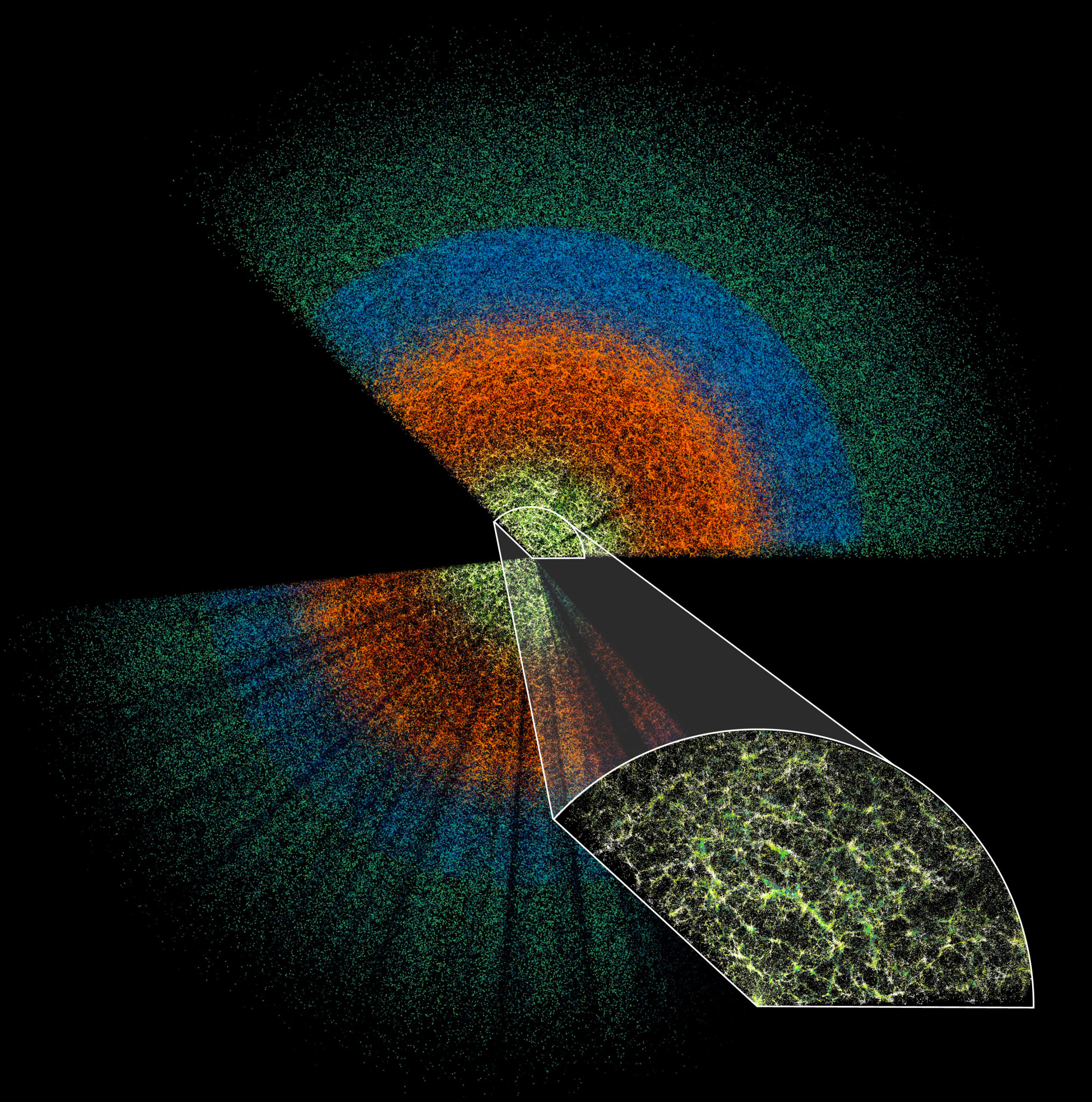
6 October 2025
Seshadri Nadathur (University of Portsmouth)
To coincide with the official publication, today in Physical Review D, of the first DESI papers on cosmology results from baryon acoustic oscillations from Data Release 2 (DR2), the DESI collaboration has also released the full set of cosmology chains and other results supporting the papers. This set of data products derived from the DR2 data is being released in advance of DR2 itself, and will allow researchers outside DESI to reproduce our results and explore new avenues.
The published “cosmology chains” contain valuable statistical information about the cosmological parameters and how well they are known. To infer the parameters, cosmologists often use methods that draw random samples from complex, multi-dimensional probability distributions. In the Markov Chain Monte Carlo (MCMC) method, a current set of randomly selected parameter values is used to generate the next random sample, resulting in a “chain” of sampled parameter values, a “cosmology chain”.
The DR2 cosmology data released today are available from this webpage, and are based on the BAO results announced in March 2025 (see here for a guide to those results). They can also be accessed directly from the NERSC supercomputing facility. The dataset includes all the MCMC chains posterior sampling runs for cosmology inference, as well as information on the “best-fit” parameter values that maximize the posterior obtained through optimization.
These data are being provided in advance of the full DR2 release in recognition of their very high significance to the cosmology community. When the full DR2 is made public in some months, these data will eventually form one of the “value-added catalogues” or VACs that accompany it.
Alongside this release, we have also released two new VACs supplementing the older Data Release 1 announced in March: these contain the corresponding cosmology chains and results based on the DR1 BAO cosmology papers from April 2024 (available here, see the paper guide here), and the DR1 full-shape cosmology papers from November 2024 (available here, see the paper guide here). Both of these new datasets are now included in the full list of DR1 VACs.
We invite interested scientists to explore these datasets, and hope that they prove to be useful for your research. In case of questions, please use the contact information provided on the landing pages of the dataset in question.